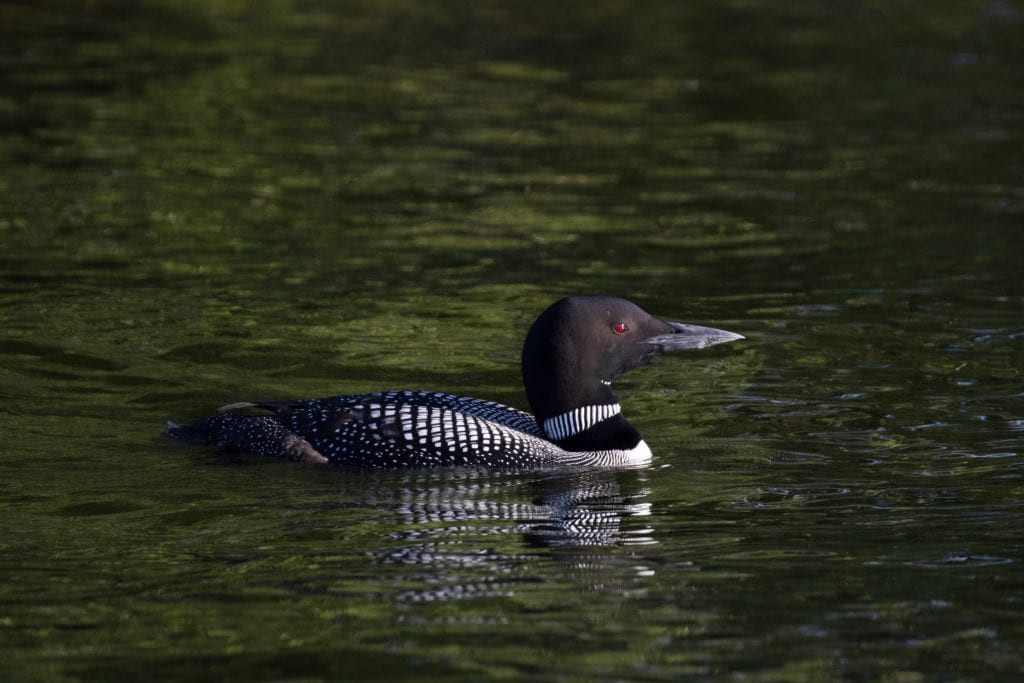
Early Saturday morning in mid July, on the shores of hundreds of Maine lakes, people are getting coffee and tea, studying maps, prepping their boats, dusting off binoculars, and meeting up with neighbors who they may only see this one time each year: They are getting ready for the Annual Loon Count.
For four decades, Maine Audubon has been engaging volunteers across Maine in conservation efforts to help Common Loons. One of the most popular components of this is the Annual Loon Count, scheduled this year for Saturday, July 15, from 7 to 7:30 am.
This event has engaged hundreds of volunteers every year since 1983. On the third Saturday of July, participants head out in canoes, kayaks, and pontoon boats, or observe from the shore, to tally the Common Loons they see. Last year, more than 1600 volunteers of all ages counted loons on 361 lakes, the largest number of lakes surveyed since Maine Audubon’s Loon Count began.
Maine Audubon Loon Count Coordinator Hannah Young says, “The loon count is this incredible moment in time where everyone across Maine who’s involved is doing the same thing at the same time. It’s a really wonderful way for people to show how much they value their lakes and their loons, and we would love to keep that going.”
JOIN THE LOON COUNT!
Hear from Loon Count Coordinator Hannah Young to learn more about the loon count and find out how you can get involved.
Maine Audubon uses the statewide snapshot to estimate the annual population and track population trends. The information helps biologists, state officials, and Maine lake users understand more about the loons’ status and the health of Maine’s lakes. Data are used to determine where struggling nesting loons need help, and how to reduce loon disturbance and mortality.
Since the loon count’s inception in 1983, the number of adult loons in the southern half of the state has essentially doubled, from an initial estimate of fewer than 1,500 to over 3,000 in 2022. This is thanks in part to conservation efforts like the Maine lead tackle ban and the Fish Lead Free Initiative (fishleadfree.org/me) which have helped reduce the number of adult loons that die from swallowing lead tackle.
Maine has the largest population of loons in the eastern United States, which makes the breeding success of loons here critical to the population at large. But plenty of threats to loons exist. Trauma, especially from boat strikes (when a boat collides with a loon), is a leading cause of adult loon deaths in Maine, as is lead poisoning from ingesting lost and discarded lead tackle. Loon counters also continue to report loon nests being flooded and eggs washing out of the nest by boat wakes.
Young says there’s always the need for more counters, especially in the northern part of the state. No experience is necessary. “We have folks who have been counting for 40 years and we have people who are just joining and have never done any kind of community science project,” she says. “Every single type of person who gets involved is incredibly helpful to this statewide initiative, and we hope to get more and more people involved.”
For more information about the 40th annual count or the Maine Loon Project, or to volunteer, contact conserve@maineaudubon.org or visit maineaudubon.org/loons.
